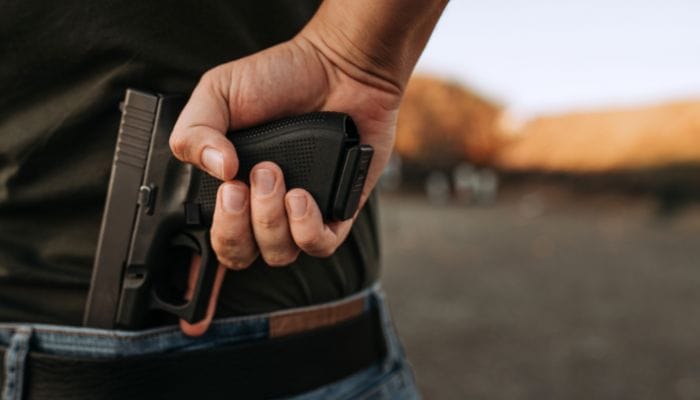Self-protection is the primary reason many people carry concealed weapons. Knowing how to properly carry and operate a gun affects how safe it is for someone to carry. Protect yourself and others with responsible gun ownership; consider these top safety tips for carrying a concealed firearm.
Build Muscle Memory
If you’re not confident with your weapon, you’re inviting trouble. Spend time drawing, firing, and holstering your weapon to build muscle memory. While it’s important to know how to shoot at the range, becoming accustomed to wearing and using your holster is key to feeling comfortable carrying a gun.
Train yourself periodically so you stay sharp. If you change your carry position, you should also practice drawing, firing, and holstering your weapon from that position. Whether you’ve moved your gun from your appendix to your hip or switched from on-body carry to off-body carry, you need to know how to draw your gun safely and efficiently from its holster.
Carry an Additional Defense Tool
In many cases, you don’t want to immediately go for the deadliest self-defense option. Carrying another defense tool, like pepper spray or a self-defense keychain, gives you another choice when you have a dangerous encounter. In many cases, pepper spray is enough to empower you to stop an attacker and get away while they’re incapacitated.
Whatever self-defense tool you use, just like with a gun, you should practice to make sure you know how to use it. Follow the manufacturer’s instructions to ensure you don’t harm yourself in the process.
Treat Your Firearm With Respect
A key safety consideration while carrying a concealed firearm is to always treat your weapon with respect. This means following firearm safety rules, such as keeping your muzzle pointed in a safe direction. A safe direction is anywhere not pointed at people or objects you don’t intend to shoot, including people and objects on other sides of barriers like walls.
If you decide to carry your gun in an off-body holster in a purse, backpack, or fanny pack, treat the bag as a holster rather than as a bag. Keep the bag on your person as often as possible and avoid separating yourself from your bag. This includes actions like tossing your bag in the backseat of your car.








































